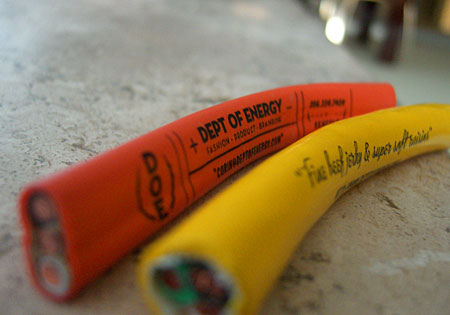Lessons from Mayweather/De La Hoya
 Anyone who watched the Floyd Mayweather/Oscar De La Hoya fight last night was probably a bit disappointed at how the fight turned out. Both boxers fought well and it certainly wasn’t a hugging match like some of the bad heavyweight fights we’ve seen recently, but at no point was either fighter in danger of even losing their balance, let alone getting knocked out. For as many times as Mayweather spoke of “knocking the shit out of Oscar” before the fight, he didn’t seem to even bruise the man.
Anyone who watched the Floyd Mayweather/Oscar De La Hoya fight last night was probably a bit disappointed at how the fight turned out. Both boxers fought well and it certainly wasn’t a hugging match like some of the bad heavyweight fights we’ve seen recently, but at no point was either fighter in danger of even losing their balance, let alone getting knocked out. For as many times as Mayweather spoke of “knocking the shit out of Oscar” before the fight, he didn’t seem to even bruise the man.
But the victory went to Mayweather anyway, mainly for his surprisingly defensive strategy of not throwing too many punches but landing a decent percentage of them.
There were a lot of interesting things about this fight though, aside from the lackluster action inside the ring:
Firstly, HBO did a spectacular job of hyping this matchup. I and almost everyone I watched it with were only excited for the matchup because we’d watched the well-produced “De La Hoya/Mayweather 24/7” series beforehand. The 4-part series was an inside look at the fighters’ lives and training regimens leading up to the fight. Filmed in high definition and brilliantly edited in a short amount of time, the series really made you love Oscar and hate Floyd. The end result was the richest fight in boxing history and one that was viewed by thousands more “casual boxing fans” than would have normally watched. More fights should receive this treatment.
The lead up to the fight also reminded me a lot of one of my favorite reality shows, The Contender. The Contender captures the drama of the boxing lifestyle and the actual boxing is often secondary. After last season was over, I spoke with someone high up at ESPN and made a suggestion I hope they take: show each episode on ESPN and ESPN2 simultaneously. Make the ESPN2 episode a half hour longer, showing the entire unedited boxing match at the end instead of the made-for-TV cutjob that’s on the flagship station. We’ll see if that happens.
Another interesting thing about this fight is that no boxer seemed to be injured at all the entire time. The standard boxing 10-point-must system scores rounds based on “injury” with most rounds ending 10-9 in favor of one fighter. I wonder if a better system would be to score all rounds 10-10 unless there was actually a legitimate pounding that took place. Under this system, almost every round in last night’s fight would have been 10-10 (possibly all of them) and the end result might have been a draw. The more important consequence of this system is that boxers would be more aggressive though. After the fight, De La Hoya said something very accurate. He said “If I didn’t bring the fight to him, there would have been no fight.” He was right. De La Hoya was the only one pushing the action, but unfortunately, he was not rewarded for it.
I also thought it was interesting (and bizarre) that Floyd Mayweather’s dad openly admitted that he thought De La Hoya won the fight afterwards in his interview with Larry Merchant. I know Floyd Sr. and Floyd Jr. are a bit estranged, but man, that is tight. If I were Jr., I’d be pissed.
The last interesting thing about the night for me was that several people I watched the fight with brought up the famous Tyson/Holyfield ear-biting match in 1997, and for a lot of us, that was the very last fight we ever paid to watch. If over 50% of us boycotted PPV boxing after that, I wonder how much money the industry has lost because of that incident. That was 10 years ago and the sport just doesn’t seem to have recovered from it. I think the industry should look long and hard at what dramas like The Contender and De La Hoya/Mayweather 24/7 can do for the sport. They’re certainly more effective than anything else that’s been tried.




 You’ve seen it a thousand times. You’re reading a great article on the web, you get to the bottom of the page, and there it is:
You’ve seen it a thousand times. You’re reading a great article on the web, you get to the bottom of the page, and there it is:
